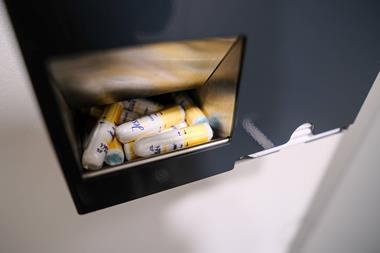Menstrual leave can improve working conditions for all employees

I abandoned my first attempt to write this article due to brain fog. At least it wasn’t cramps, backache or nausea – all examples of the variety of symptoms I might work through for a couple of days a month, thanks to the delights of my menstrual cycle.
While my symptoms are unpleasant, they’re generally manageable with a few painkillers. This is fortunate, because taking a few days off work every month is not generally encouraged in the UK.
However, a small number of countries have laws mandating menstrual leave. In Taiwan, women are permitted three additional days of sick leave per year (on half pay); in Zambia, women are entitled to a paid day off each month; in Spain, menstruating employees who can get a doctor to attest to the severity of their periods can take 3–5 days of paid leave per month.
You could argue that specific menstrual leave shouldn’t be needed – that it should be covered by existing sickness leave. However, many HR systems flag employees who take too many sick days in a year; excessive time off can even be the basis of disciplinary procedures or a reason for firing.
I suspect that in many cases, allowing employees to take a couple of days of menstrual leave a month would not affect productivity significantly. For one thing, you wouldn’t really lose a whole day of output – someone struggling through brain fog or pain isn’t going to be working at full capacity. While it could cause issues where employees are required to be present in person, that’s the case for sick leave anyway.
It normalises taking the time off you need to take care of your health
Menstrual leave would have to be implemented sensitively. Not everyone will be comfortable with the details of their menstrual cycle being disclosed to colleagues, which may lead some employees to not take the time off they need. And care would have to be taken to make sure records of leave aren’t used to disclose other health information – if they’re examined for patterns that could indicate pregnancy or perimenopause, for example.
Tracking leave could also lead to unscrupulous employers not offering opportunities to menstruating employees at certain times of the month, as managers fear them dropping out at short notice. Those employers might even hesitate (illegally) to offer jobs or pay increases to people who they think are likely to take menstrual leave.
Overall though, I think menstrual leave is a good policy. It doesn’t only benefit menstruating employees. It encourages a safer working environment by not requiring employees to battle through pain while handling chemicals or operating machinery. When paired with other types of workplace support, it improves morale as employees worry less over how to manage menstrual symptoms at work. Most importantly, it normalises taking the time off you need to take care of your health – whatever medical conditions you face.

















No comments yet